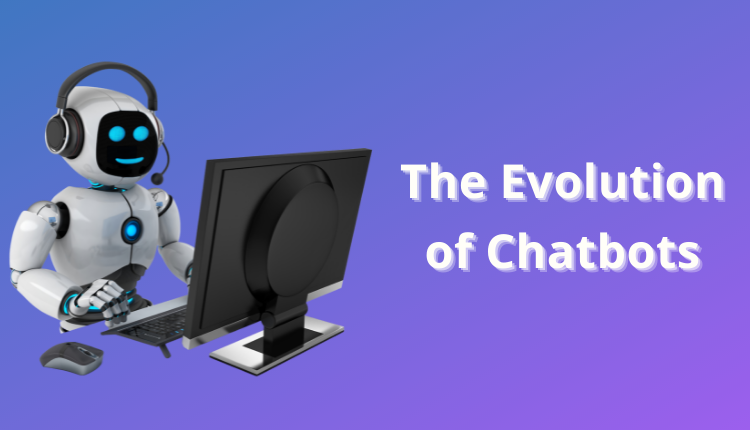While the idea of talking to a robot might seem silly or like something from a science fiction novel, the truth is, you probably already spend time talking to robots. The development and integration of artificial intelligence (AI) into our everyday lives and the technology we use means robots are all around us. Chatbots are just one common example. The term chatbot is a combination of “chat” and “robot.” In other words, a chatbot is a kind of robot designed to have conversations with humans. Chatbots are all around us today. If you have ever approached customer service online for a large corporation, you have probably spoken to a chatbot. But chatbots haven’t always been as sophisticated as they are now. They have come a long way over time since the first chatbot was invented in the 1950s. In this article, we will talk about the evolution of chatbots and the features of the chatbots that we interact with often today.
What is a Chatbot?
A chatbot is, simply put, a program or a machine that is capable of responding to a human in the form of a conversation. While some chatbots are actual physical robots, many are just software programs that people can talk to through a computer using a website or some other chatting interface. Chatbots can use either text or voice-based applications.
Chatbots should not be confused with conversational AI, although the two are closely related. Conversational AI uses natural language processing (NLP) to remember what people have said to them and learn to respond to a broad range of input. It is a technology tool that can be used in chatbots. However, not all chatbots use conversational AI. Some chatbots are programmed to be rules or flow-based, which means they can only respond to a predetermined range of input. This means they follow a script or they only know how to answer certain questions on a limited range of topics.
The History of Chatbots: Then
Because many people associate chatbots with instant messaging and computers, chatbots are often thought to be a very recent invention. But in fact, chatbots have been with us for a long time. The world’s very first chatbot was created by Joseph Weizenbaum at the Massachusetts Institute of Technology (MIT) in 1966, and named ELIZA. ELIZA used pattern matching and substitution methodology to come up with responses to text input from humans. ELIZA’s script imitated a psychotherapist, and her creator quickly discovered the power of chatbots when he found his testers confiding secrets and deep feelings to the program.
Programmers built off of Weizenbaum’s creation to develop chatbots capable of increasingly advanced functions throughout the next several decades. Chatbots became the foundation of automated telephone systems, introducing them to the public at large. The next big breakthrough in chatbot development was arguably the creation of ALICE in 1995. ALICE was capable of natural language processing and simulated real human conversation. The real revolution, however, came from making ALICE open source. Other programmers could use ALICE to create their own chatbots, which allowed for rapid advancement in the world of chatbots. Smarterchild appeared in 2001, and was available on the MSN and AOL chat programs. Many people consider Smarterchild a precursor to Siri, Apple’s AI chatbot that is popular today. Smarterchild was able to have fun conversations and access data services quickly, expanding the range of what chatbots could do.
The History of Chatbots: Now
The introduction of AI and open source development of chatbots has resulted in quick improvements and widespread adoption of this technology. Chatbots now regularly serve as personal assistants and customer service assistants in businesses worldwide. Apple’s Siri, Samsung’s Bixby, Microsoft’s Cortana, Google’s Google Assistant, and Amazon’s Alexa are all examples of chatbots that act as personal assistants. They respond to voice commands and are capable of monitoring email, calendars, home security systems, and other such tasks. However, none of these chatbots are perfect. Siri has difficulty with different accents and requires an internet connection to work. Alexa and Google Assistant have both given rise to privacy concerns. Cortana is capable of installing malware. Despite their flaws, these chatbots have become an integral part of how we live our lives today.
In addition, there are chatbots in the business and education worlds as well. In 2016, a development in AI technology led to the widespread adoption of chatbots on business platforms to perform customer service. This change was the ability of developers to use social media platforms to create their own chatbots specific to their brand or service. Now, many sites offer a chatting option that utilizes a bot to answer common questions from customers and resolve simple problems.
That’s not all that chatbots can do. Particularly with the COVID-19 pandemic leading to many students studying from home all over the world, chatbots have even become more frequent classroom companions. Some schools have begun to utilize chatbots as their own kind of customer service representatives, like businesses, to answer parent questions and share information about scheduling, the curriculum, and more. However, education administrators say that we shouldn’t worry about these robots taking our jobs. Instead, they are becoming popular because there is already a shortage of education workers.
Chatbots In the Future
As AI development continues, we can expect chatbots to improve as well. Soon, it might become impossible to tell whether you are talking online to a bot or a real person. Chatbots have come a long way from their initial form, and natural language processing and AI are enabling rapid new technologies to become part of our everyday lives. It is clear that the age of the chatbot is here to stay.

